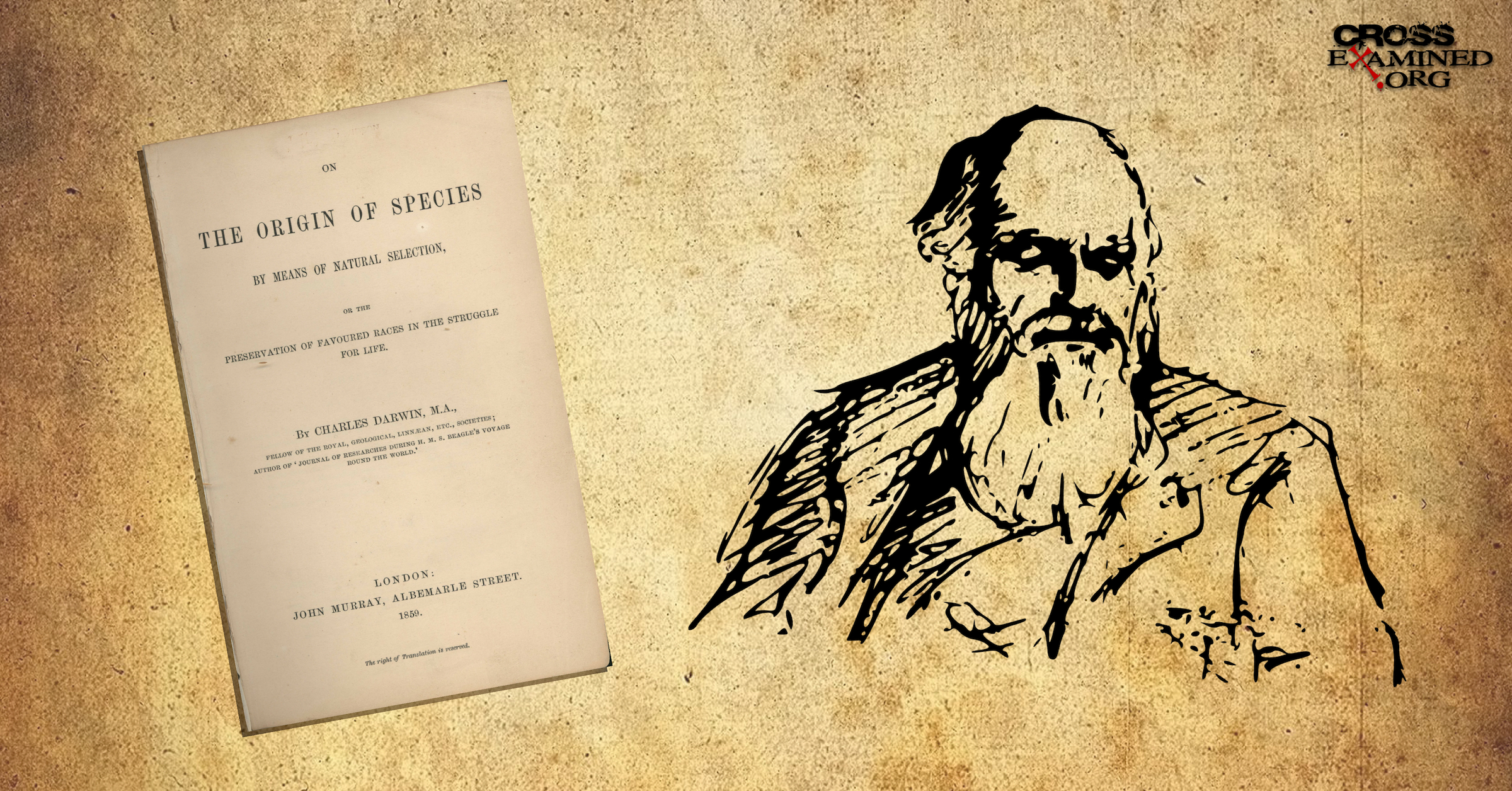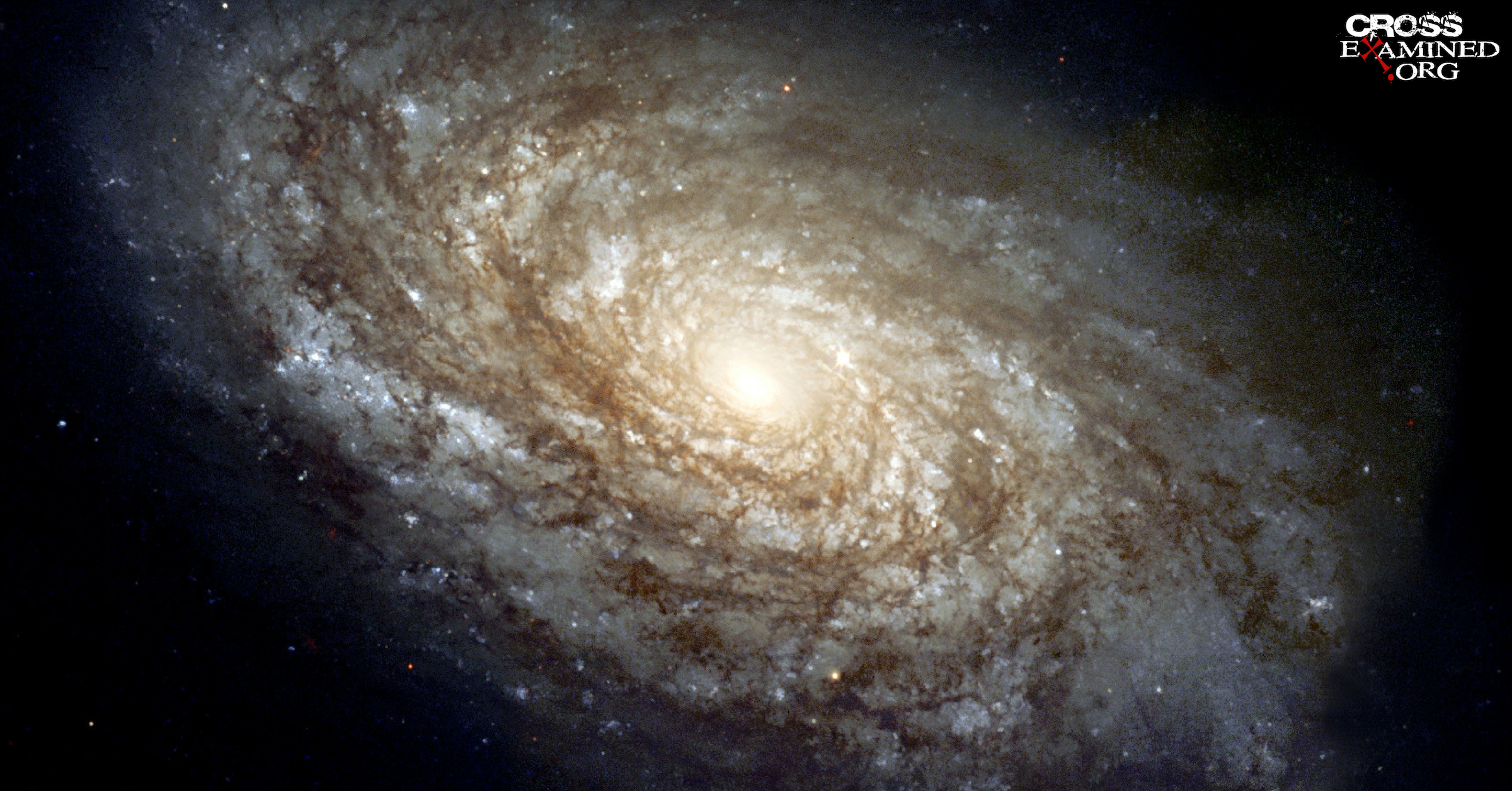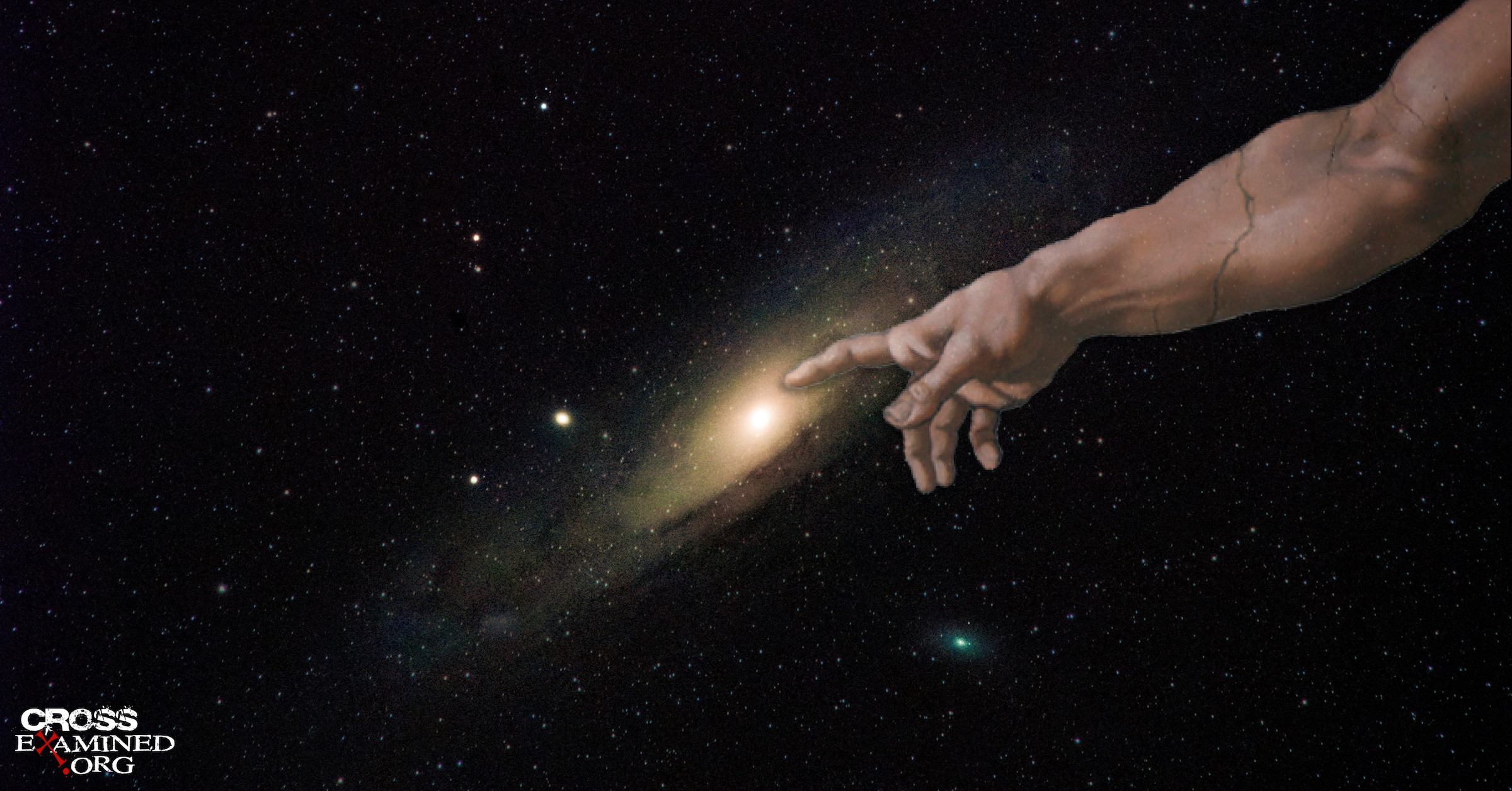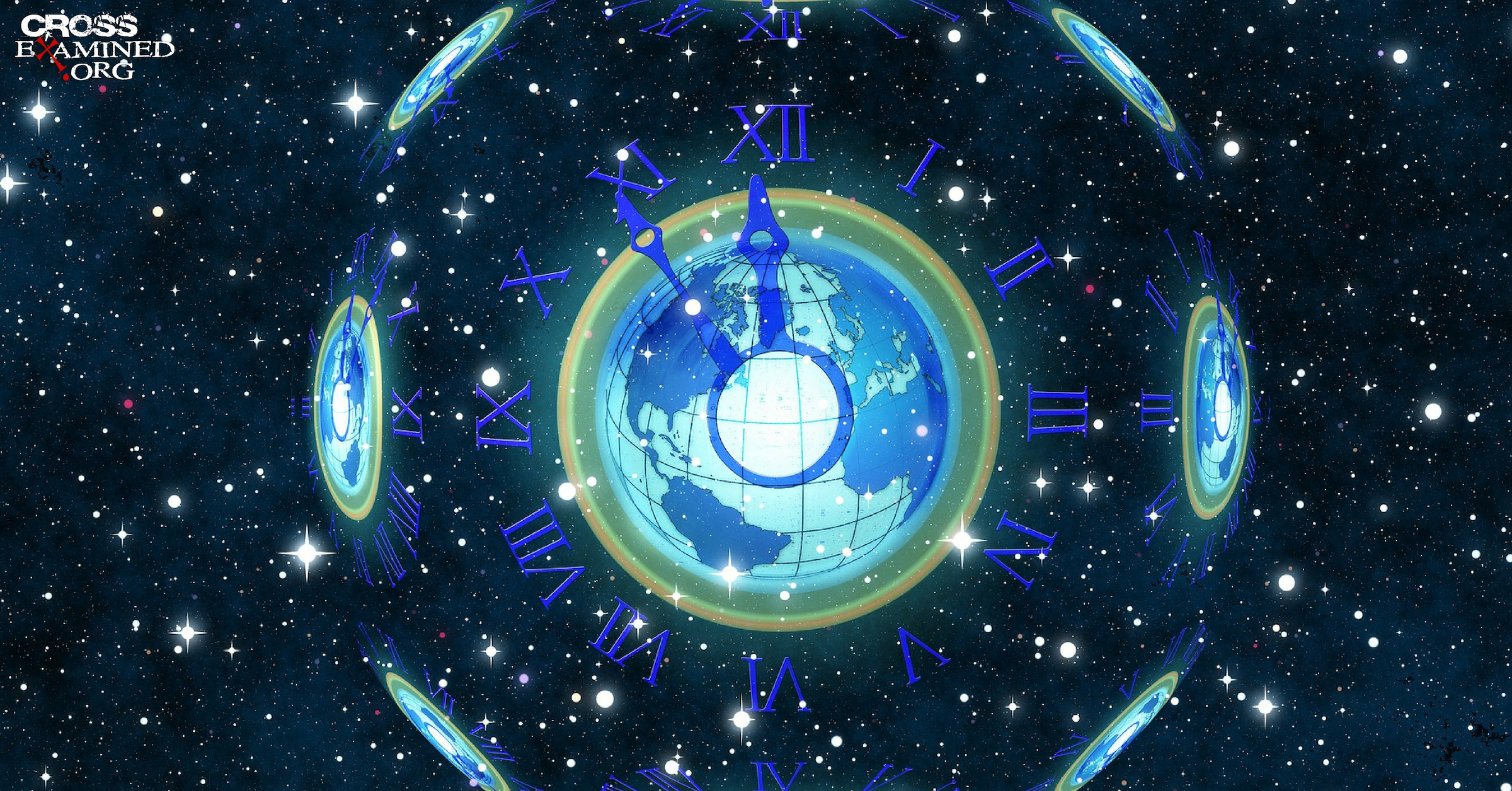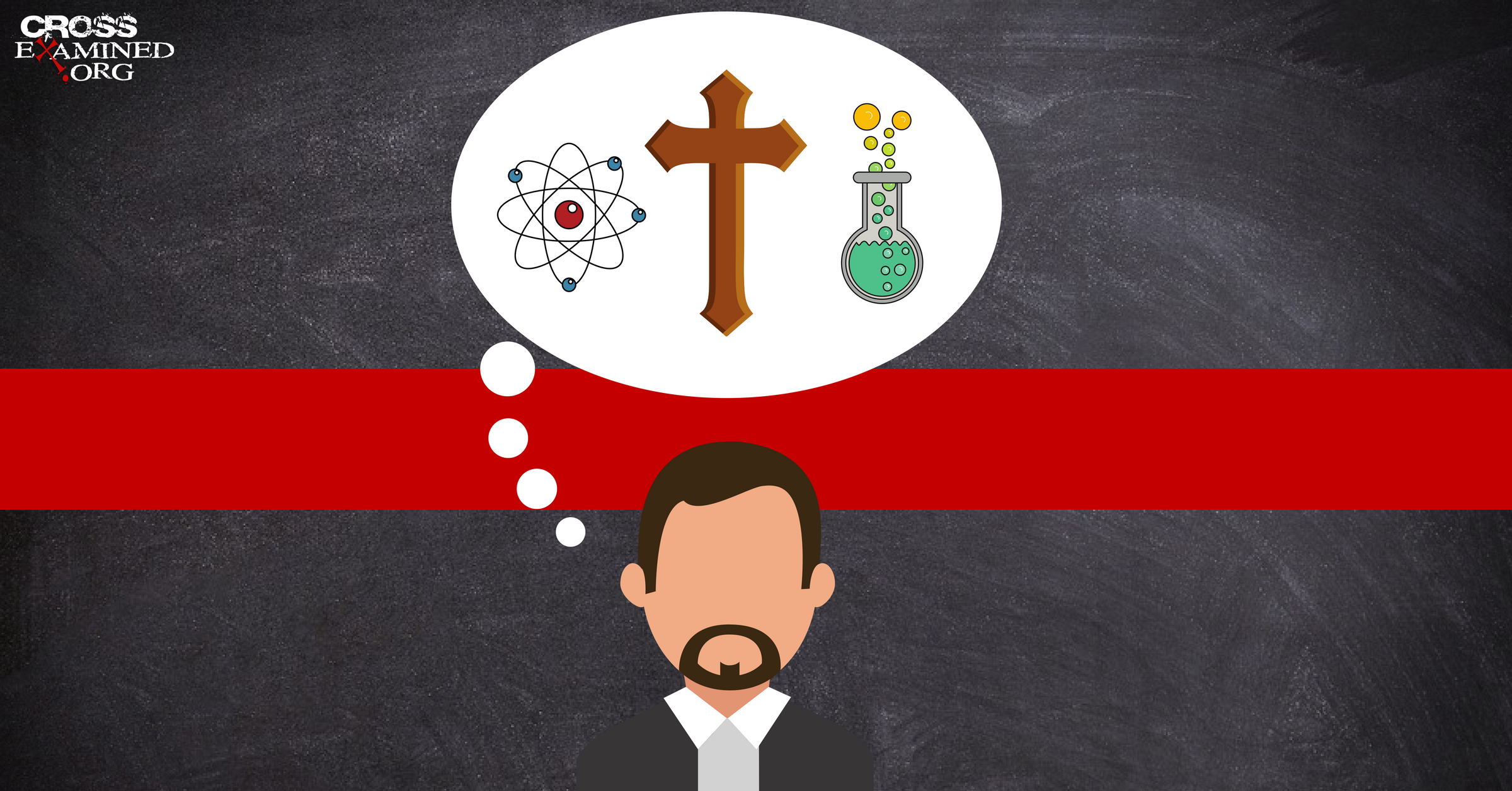Por Huge Ross
Cuando se trata de las características de ajuste fino del universo, los no-teístas se encuentran en un aprieto. La evidencia es demasiado significativa y concreta como para dejar de lado. La evidencia es inanimada; así que no se puede apelar a hipótesis darwinistas. Las apelaciones a un tiempo casi infinito se ven frustradas por las pruebas de la creación del tiempo sólo unos pocos miles de millones de años atrás. Los siguientes cinco argumentos parecen cubrir el rango de las respuestas no teístas a la evidencia del diseño cósmico:
Argumento 1: nosotros no estaríamos aquí para observar el universo si lo extremadamente improbable no hubiera ocurrido.
La evidencia a favor del diseño es meramente accidental. Nuestra existencia simplemente testifica que lo extremadamente improbable ciertamente tuvo lugar por azar. En otras palabras, no estaríamos aquí para reportar las características del universo a menos que el azar hubiera producido estas propiedades altamente improbables.
Refutación: Este argumento es fundamentalmente una apelación a las probabilidades infinitas que ya ha sido contestada (ver capítulo 12). Otra respuesta ha sido desarrollada por el filósofo Richard Swinburne[1] y ha sido resumida por otro filósofo, William Lane Craig:
Suponga que cien tiradores expertos son enviados para ejecutar a un prisionero en un escuadrón de fusilamiento, y el prisionero sobrevive. El prisionero no debería asombrarse de que no ve que está muerto. Después de todo, si estuviera muerto no podría observar su muerte. No obstante, tendría que asombrarse de que esté vivo.[2]
Extendiendo el argumento de Craig y Swinburne, el prisionero debería concluir, dado que está vivo, que todos los tiradores expertos erraron por algún azar extremadamente improbable. Él podría querer atribuir su supervivencia a una increíble buena suerte, pero sería mucho más racional que él concluyera que los fusiles estaban cargados con salvas o que los tiradores erraron a propósito. Alguien tiene que haber tenido el propósito de que viva. De la misma forma, la conclusión racional que se deduce del ajuste fino del universo es que alguien tuvo el propósito de que nosotros viviéramos.
Argumento 2: el diseño del universo es simple antropomorfismo
El astrofísico Joseph Silk, en su más reciente esfuerzo de comunicar la física de la cosmología del Big Bang a los legos, se mofa de la conclusión de que el universo ha tenido un ajuste fino para soportar la vida. Compara la “tontería” de la idea del diseño con la suposición absurda de la pulga de que el perro del que se alimenta ha sido diseñado precisamente para su beneficio. El error de la pulga, sugiere, se vuelve muy aparente apenas se le coloque al perro un collar para las pulgas.[3]
Refutación: El argumento de Silk ignora algunos temas clave. Si bien la pulga puede estar un poco centrada en sí misma al suponer que el perro fue diseñado exclusivamente para ella, no hay ninguna razón para negar que el perro fue diseñado para un propósito, o para varios propósitos. (El mito de que la vida es producto estrictamente de procesos naturales accidentales es tratado en el capítulo 16.) El collar contra las pulgas puede ser un argumento más fuerte a favor del diseño (por ejemplo, el control de la población) que a favor de la falta de diseño. Más importantemente, si bien podemos imaginarnos un amplio rango de huéspedes adecuados para soportar a la pulga, cada uno de ellos requiere elementos de diseño para facilitar la supervivencia de la pulga.
Aunque son bastante abundantes los huéspedes adecuados para la pulga, no lo son los universos adecuados para la vida. Los astrofísicos no han sido capaces de inventar universos hipotéticos significativamente diferentes del nuestro que pudieran soportar seres humanos o, para el caso, cualquier tipo de vida física inteligente concebible.
Argumento 3: los argumentos del diseño están fuera del dominio de la ciencia y, por lo tanto, deben ser ignorados
Las publicaciones del National Center for Science Education, entre otros grupos anti-creacionistas, aseveran repetidamente que la ciencia está “basada en lo empírico y es necesariamente materialista; los milagros no deben ser permitidos” y que “cualquier teoría con un fundamento sobrenatural no es científica.”[4] Dado que los argumentos de diseño implican la intervención sobrenatural, pueden ser ignorados justificadamente porque “no pueden ser considerados científicos.”[5]
Refutación: Afirmar que la ciencia y la teología son mutuamente excluyentes puede ser conveniente para los materialistas que no están dispuestos a defender su filosofía, pero es insostenible. La ciencia raramente es neutral en lo religioso. Análogamente, la fe religiosa raramente es neutral en lo científico. Tanto la ciencia como la teología tratan frecuentemente con causa y efecto y con procesos de desarrollo en el mundo natural. Tanto la ciencia como la teología tratan con el origen del universo, el sistema solar, la vida y la humanidad.
Cuando se trata de las causas, los procesos de desarrollo y los orígenes, existen siempre dos posibilidades: natural o sobrenatural. Insistir dogmáticamente que nunca deben considerarse respuestas sobrenaturales equivale a decir que todos los seres humanos sigan una sola religión, la religión del materialismo ateo. Encuentro irónico que, en nombre de la libertad religiosa, ciertos proponentes de la educación científica insisten en librar a nuestras instituciones de enseñanza e investigación de cualquier fe que se atreva a competir con la suya.
Argumento 4: el orden puede surgir del caos
La idea de que bajo condiciones estrictamente naturales el orden puede surgir y surgirá del caos fue propuesta primeramente por David Hume, casi doscientos años atrás. Recientemente, ha sido revivido por el químico galardonado con el premio Nobel, Ilya Prigogine en su libro Order out of Chaos (El orden a partir del caos)[6] y por la exitosa película Jurassic Park (Parque Jurásico). Hume hizo la afirmación sin ningún apoyo de las evidencias. Prigogine señaló varias reacciones químicas en las que el orden parece surgir de sistemas caóticos. Jurassic Park en realidad toca otro tema, a saber la teoría del caos y la lógica borrosa.
El principio detrás de la teoría del caos y la lógica borrosa es que, al tratar de predecir el resultado del estado futuro de sistemas excepcionalmente complejos, el investigador estará mejor si se conforma con respuestas o conclusiones aproximadas en cada paso en la solución de un problema en vez de respuestas o conclusiones exactas. La presunción de un principio auto-organizador en los sistemas caóticos surge del hecho de que cuanto más complejo es el sistema mayor es la oportunidad de desviaciones del equilibrio termodinámico en pequeñas porciones del sistema (y mayor es la dificultad para determinar cuáles son realmente los estados de equilibrio termodinámico). Según la segunda ley de la termodinámica, la entropía crece en todos los sistemas, pero la entropía puede decrecer (es decir, el orden puede crecer) en parte de un sistema, siempre que un incremento adicional de entropía (es decir, desorden) ocurra en otra parte del sistema.
Debido a que los investigadores humanos pueden ser propensos a subestimar la complejidad de algunos sistemas, se sorprenden ocasionalmente por cuánto puede desviarse una pequeña porción de un sistema del equilibrio termodinámico. No obstante, las leyes de la termodinámica predicen que estas desviaciones son temporarias, y cuanto mayor la desviación, más rápidamente se corrigen los desvíos.
Sin los desvíos del equilibrio termodinámico, no se formarían las gotas de lluvia y los copos de nieve, por ejemplo. Pero la formación de gotas de lluvia y de copos de nieve se acerca a los límites de auto-organización de un proceso natural. Si bien los copos de nieve exhiben un alto grado de orden, su contenido de información o nivel de diseño permanece bastante bajo. La distinción es aproximadamente como la diferencia entre el Nuevo Testamento y un libro que contenga la oración “Dios es bueno” repetida 90.000 veces.
El último ejemplo muestra un orden considerable, pero no mucha información. El primer ejemplo contiene un alto grado de orden y un alto grado de información (o diseño) a la vez. Los ejemplos de Prigogine exhiben incrementos de orden pero sin incrementos significativos en el contenido de información. Los procesos naturales solos no pueden explicar el nivel excepcionalmente alto de diseño y de contenido de información en los organismos vivos o en la estructura del universo que hacen que la vida sea posible.
Argumento 5: a medida que seguimos evolucionando, llegaremos a ser el creador-diseñador
En su libro, The Anthropic Cosmological Principle (El principio antrópico cosmológico), los astrofísicos John Barrow y Frank Tipler reseñan muchas nuevas evidencias del diseño del universo.[7]
Luego pasan a discutir versiones del principio antrópico como el WAP (Weak Anthropic Principle – principio antrópico débil: los seres conscientes sólo pueden existir en un medio ambiente con características que permitan que lo habiten), el SAP (Strong Anthropic Principle – principio antrópico fuerte: la naturaleza debe adoptar aquellas características que admitan, en algún lado y en algún tiempo, la existencia de seres conscientes), y versiones más radicales, incluyendo el PAP (Participatory Anthropic Principle – principio antrópico participativo: los observadores conscientes son necesarios para traer a la existencia al universo, y el universo es necesario para traer a la existencia a los observadores). Pero lo que ellos propician es el FAP (Final Anthropic Principle – principio antrópico final).
Con el FAP, la vida que existe (pasado, presente y futuro) continuará evolucionando con los recursos inanimados del universo hasta que alcance un estado que Barrow y Tipler denominan el “Punto Omega.”[8] Este Punto Omega, dicen, es una Entidad que tiene las propiedades de omnipotencia, omnipresencia y omnisciencia, con la capacidad de crear en el pasado.[9] En otras palabras, el Dios-Creador no existe todavía, pero nosotros (toda la vida y todas las estructuras inanimadas del universo) estamos evolucionando gradualmente hacia Dios. Cuando Dios sea construido finalmente así, Su poder será tal que Él puede crear un universo entero con todas sus características de diseño miles de millones de años atrás.
En su último libro, The Physics of Immortality (La física de la inmortalidad),[10] Tipler propone que la evolución hacia el Punto Omega ocurrirá mediante el avance de la tecnología de las computadoras. Extrapolando el tiempo de duplicación de la capacidad de computación (en la actualidad, alrededor de dieciocho meses) hacia algunos millones de años en el futuro, Tipler predice que una generación futura de seres humanos podrá no sólo alterar todo el universo y todas las leyes de la física sino también crear un Dios que aún no existe. Más aún, podremos resucitar cada ser humano que haya vivido jamás mediante la recuperación de los recuerdos que alguna vez residieron en el cerebro de cada persona.
Refutación: Es difícil tratar estas hipótesis del FAP y del Punto Omega en forma seria. En el New York Review of Books, el conocido crítico Martin Gardner ofreció su evaluación del trabajo de Barrow y Tipler:
¿Qué podemos decir de este cuarteto de WAP, SAP, PAP y FAP? En mi opinión no tan humilde, creo que el último principio puede llamarse mejor CRAP, Completely Ridiculous Anthropic Principle – principio antrópico completamente ridículo (nota: en inglés, la palabra “crap” significa “basura”).[11]
En The Physics of Immortality, Tipler sobrestima groseramente el papel de la memoria humana y la capacidad futura de las computadoras. Así como las computadoras no pueden funcionar solamente con bancos de memoria, tampoco la mente humana y la conciencia humana operan solamente mediante la memoria. Si bien están teniendo lugar hoy notables progresos en la tecnología de computación, las leyes de la física imponen límites finitos predecibles sobre el hardware de las computadoras futuras. Como ha sido documentado rigurosamente por Roger Penrose en The Emperor’s New Mind y Shadows of the Mind, estos límites no permiten siquiera la duplicación de la conciencia humana, y mucho menos las capacidades fantásticas que sugiere Tipler.[12]
Pero Tipler aparentemente quiere alterar mucho más que sólo el universo y las leyes de la física. Él cree, por ejemplo, que las computadoras futuras serán capaces de exponer a la gente a los principios de la teoría del juego tan efectivamente que todos los pensamientos y acciones destructivos serán purgados y ya no habrá maldad, aún para gente del tipo de Adolf Hitler y Mata Hari.[13]
En la religión de Tipler, la obra redentora de un Salvador se vuelve innecesaria. Considere, sin embargo, que si la propuesta de Tipler fuera cierta, cuanto mejor la gente comprendiera la teoría del juego menor sería la propensión que exhibirían a cometer el mal.
Desafortunadamente para Tipler, no hay evidencias de ninguna correlación de este tipo.
Tipler no sólo descarta el infierno, sino que redefine el cielo. El “cielo” de Tipler trae la dicha relacional (más precisamente, sexual) a todo hombre y mujer. Él produce una ecuación para “probar” que su utopía generada por la computadora traerá a cada hombre una mujer, y a cada mujer un hombre, capaces de entregar 100 000 veces el impacto y la satisfacción del mejor compañero que uno pueda imaginar en la vida que conocemos.[14] La atracción popular de esta idea documenta la bancarrota espiritual de nuestro tiempo. Evidentemente muchas personas nunca han saboreado un placer mayor que lo que puede dar la experiencia sexual.
En un artículo para el Skeptical Inquirer, Gardner nuevamente blandió sus cuchillos satíricos:
Le dejo al lector que decida si deberán optar por OPT (Omega Point Theology – teología del punto omega) como una nueva religión científica superior a la Cienciología – una religión destinada a elevar a Tipler al rango de un profeta más grande que L. Ron Hubbard – u optar por el punto de vista de que OPT es una fantasía descabellada generada por la lectura de demasiada ciencia-ficción.[15]
En su rechazo persistente de un Creador eterno y trascendente algunos cosmólogos (y otros) están recurriendo a opciones cada vez más irracionales. Hay cierta lógica en esto, sin embargo. Si por motivos personales o morales el Dios de la Biblia no es aceptable, entonces, dada toda la evidencia para la trascendencia y el diseño, las alternativas están restringidas a vuelos de la imaginación.
A lo largo del tiempo y a medida que destrabamos más de los secretos del vasto cosmos, los hombres y mujeres estarán más sobrecogidos por cuán exquisitamente está diseñado el universo. Pero ¿a qué estará dirigido ese sobrecogimiento – a la cosa creada o al Creador? Esa es la elección de cada persona.
Notas
[1] Swinburne, p. 165.
[2] William Lane Craig, “Barrow and Tipler on the Anthropic Principle Versus Divine Design,” British Journal of Philosophy and Science 38 (1988), p. 392.
[3] Joseph Silk, Cosmic Enigma (1993), p. 8-9.
[4] NCSE staff, Education and Creationism Don’t Mix (Berkeley, CA: National Center for Science Education, 1985), p. 3; Eugenie C. Scott, “Of Pandas and People,” National Center for Science Education Reports (Enero-Febrero1990), p. 18; Paul Bartelt, “Patterson and Gish at Morningside College,” The Committees of Correspondence, Iowa Committee of Correspondence Newsletter, vol. 4, no. 4 (October 1989), p. 1.
[5] Education and Creationism Don’t Mix, p. 3; Eugenie C. Scott and Henry P. Cole, “The Elusive Scientific Basis of Creation Science,” The Quarterly Review of Biology (March 1985), p. 297.
[6] Ilya Prigogine and Isabelle Stengers, Order out of Chaos: Man’s New Dialogue With Nature (New York: Bantam Books, 1984).
[7] Barrow y Tipler.
[8] Barrow y Tipler, p. 676-677.
[9] Barrow y Tipler, p. 676-677, 682; Martin Gardner, “Notes of a Fringe-Watcher: Tipler’s Omega Point Theory,” Skeptical Inquirer 15, no. 2 (1991), p. 128-132.
[10] Frank J. Tipler, The Physics of Immortality: Modern Cosmology, God and the Resurrection of the Dead (New York: Doubleday, 1994).
[11] Martin Gardner, “WAP, SAP, PAP, and FAP,” The New York Review of Books, vol. 23, no. 8, 8 May 1986, p. 22-25.
[12] Roger Penrose, The Emperor’s New Mind (New York: Oxford University Press, 1989), p. 3-145, 374-451; Roger Penrose, Shadows of the Mind (New York: Oxford University Press, 1994), p. 7-208.
[13] Frank J. Tipler, p. 253-255.
[14] Frank J. Tipler, p. 256-257.
[15] Gardner, “Notes of a Fringe-Watcher,” p. 132.
Blog Original: http://bit.ly/2OERFPO
Traducido por Alejandro Field


